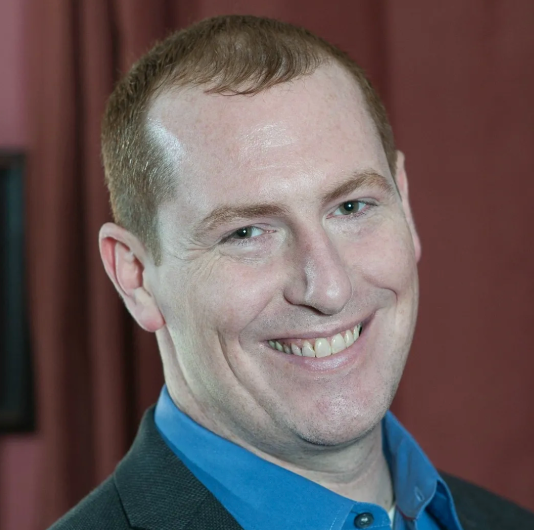Fecal Transplants Save Lives — So Why Are They So Hard to Get?
The Peggy Lillis Foundation is fighting to restore access to FMT for severely ill and pediatric patients.
By
Lana Pine
| Published on July 17, 2025
6 min read
Christian John Lillis
Credit: Peggy Lillis Foundation

When recurrent Clostridium difficile (C. diff) infections upend lives, one treatment has stood out for its remarkable success: fecal microbiota transplant (FMT). But despite its lifesaving potential, access to FMT is now more limited than ever — especially for severely ill patients and children.
Christian John Lillis, co-founder and CEO of the Peggy Lillis Foundation, has been on the front lines of this battle since losing his mother to C. diff. In an interview with The Educated Patient, he explains what FMT is, how it compares with newer U.S. Food and Drug Administration (FDA)-approved treatments, why patients are now struggling to access it and what families and advocates can do to fight back.
For people unfamiliar with FMT, can you explain what it is and how it helps those with recurrent C. diff infections?
Christian John Lillis: Sure. C. diff is a bacterial infection of the gastrointestinal tract, mainly the colon. It often arises when the gut microbiome — the community of good bacteria and microorganisms that help us digest food and support immune function — gets disrupted. This disruption is usually due to antibiotics, but it can also result from chemotherapy or chronic antacid use. When the good bacteria are diminished, C. diff can overgrow and release a toxin that damages the colon lining, causing symptoms like urgent, frequent diarrhea (20 to 30 times a day), fever, nausea and brain fog.
FMT involves taking stool from a healthy donor — someone with a robust and balanced gut microbiome — and transplanting it into a person with recurrent C. diff, most commonly via colonoscopy. This restores the patient’s microbiome and can eliminate the infection. Originally, FMT was used only in academic research settings, but it proved to be extremely effective.
How effective is FMT compared with traditional antibiotic treatments?
CJL: This is a complicated question. The first-line treatment for an initial C. diff infection is usually more antibiotics, such as vancomycin or fidaxomicin. For about half of patients, that works. But for the other 40% to 50%, the infection returns. Doctors began using FMT for patients who had failed multiple rounds of antibiotics, and in small studies, the success rate was as high as 90%.
However, these early studies were small, often involving fewer than 50 people. That’s not enough for typical drug approval standards, which require hundreds of participants. Since 2022, the FDA has approved two microbiome-based therapies modeled on FMT: Rebyota (administered via enema) and Vowst (taken orally). These drugs are easier to standardize and manufacture, but their efficacy rates in large trials were slightly lower than traditional FMT. Still, they offer more reliable data because of the larger sample sizes.
The real issue is that each recurrence of C. diff increases the likelihood of another. After one recurrence, the chance of a second is around 40%. After two, it jumps to 60%. FMT breaks this cycle by restoring a healthy microbiome.
If FMT is so effective, why is access so limited now?
CJL: Great question. From 2013 to 2023, the FDA allowed “enforcement discretion,” meaning doctors could perform FMT without formal drug trial requirements. A nonprofit stool bank called OpenBiome provided screened donor material to hospitals. But at the end of 2023, the FDA ended this policy. Now, unless you’re part of a clinical trial, it’s nearly impossible to get traditional FMT.
Only a handful of academic centers still offer FMT, and geographic access is a serious issue. For example, there are no FMT centers in California currently. This puts a huge burden on patients who may be severely ill and unable to travel.
The FDA hoped that new commercial products like Rebyota and Vowst would fill the gap. While we support these therapies, the shift happened too quickly. Doctors are slow to adopt new practices, and many still default to multiple rounds of antibiotics before offering these newer options. Plus, neither FDA-approved product is available for pediatric patients.
What is the Peggy Lillis Foundation doing to advocate for access to FMT and better treatments?
CJL: In October, we led a meeting with the FDA, bringing together clinicians, survivors and policy experts. We urged them to keep the enforcement discretion policy for severely ill patients and children until broader access to approved therapies is available. We argued this on medical, ethical and regulatory grounds.
Unfortunately, the FDA ended enforcement discretion for all patients, and delays in data reporting mean we may not know the true impact of these policy changes until 2025. Meanwhile, we continue to support patients directly — helping them navigate treatment options, access medication and even figuring out how to get patients to one of the stool banks when possible.
How can patients, caregivers and advocates help push for better treatment access and awareness?
CJL: We have a volunteer program called the Advocates Council. These are individuals who testify at FDA and Centers for Disease Control and Prevention hearings, engage with legislators, and participate in our annual lobby day. We also share information about clinical trials and vaccine studies that patients or their loved ones might qualify for.
Ultimately, we believe stool should be treated as a human tissue — like blood or bone marrow — instead of being regulated purely as a drug. This would open new pathways for access and innovation. If patients and caregivers speak up and join our efforts, we can change the system together.

